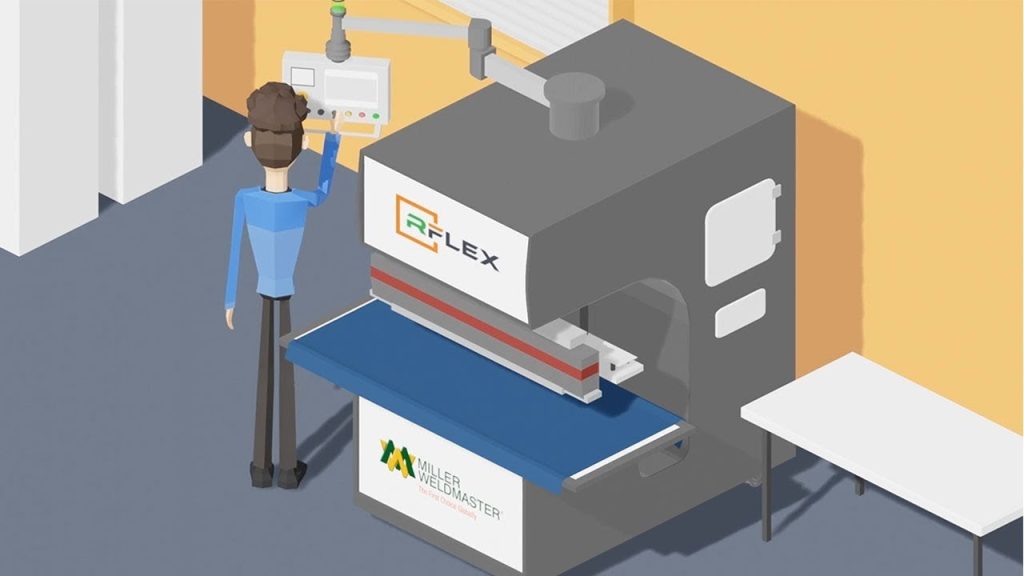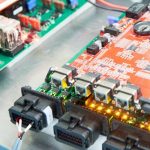There are some plastics with polar molecules like polyamides, acetates and PVC, which can be heated using high frequency electromagnetic waves. RF welding and sealing uses this property of plastics to soften them for fusing. Let’s see how RF welding and sealing work.
Introduction to RF Welding
The process of heating can be localized and made continuous. This process is also called High Frequency or dielectric sealing. In this article, we’ll look at the principles of RF sealing and welding, common methods of implementation, and the benefits of using RF welding/sealing in real life scenarios.
Theory behind RF Welding and Sealing
Radio Frequency welding/sealing, often referred to as RF welding in short, is a very organized technology that has been widely used for over 60 years.
Commonly used materials for RF sealing are polyurethane and PVC. However, other polymers like EVA, PET, Nylon, and a few ABS plastics can also be welded using this process.
RF energy used in the process has the ability to excite the polar molecules present in a few kinds of plastics, and as we all know, heat is created when molecules move faster. When these molecules are excited, they start moving faster thus giving rise to heat; this heat energy in turn melts the plastic and joins it together.

How is RF Welding and Sealing Implemented?
The two parts of the material that are to be sealed are kept on a table press that applies pressure to the surface area of the materials. The sealing process is directed by dies; when the table press comes together, radio frequency waves are sent through the small area between the table and die where the sealing happens. The radio frequency (normally 27.12 MHz) excites the molecules to move around and get hot. The application of heat and pressure thus welds the pieces in the shape of the die.

The reason for the presence of a buffer is to facilitate usage of more RF energy for sealing. When the sealing process is in progress, the plastic is melted for decreasing the thickness. The RF energy continues to excite the molecules and like any other electrical field, it looks for the easiest way to complete the circuit easily; the closest ground being the bottom of the die.
In the absence of a buffer, once the plastic becomes thin enough, the RF energy is likely to create a hole in the plastic. When a buffer is used, it provides electrical resistance to the RF energy, thus diffusing it all through the surface of the die.
Common Installations
The most common application of RF welding and sealing machines is in factories. It is used in the fabric industries to seal polyurethane and PVC coated fabrics. The process is also commonly used in different kinds of industries where polymer films need sealing. Even sealing equipment and automation systems make use of RF welding. Some of the common products that are sealed using RF sealing include inflatable toys, seat cushions, inflatable rafts, bladders of footballs, dust filters, automobile sun visors/tops/doors, sheet protectors, etc.
Benefits of RF Sealing/Welding
The fusion of these plastics can be done using a plain old heat sealer also, but the process is much faster when a RF welder is used, thus increasing the overall production rate by a decent margin. This is the reason that most factories prefer a RF welder to the conventional heat sealer.
In addition to this, when RF welding is used to seal plastic, it cools down quicker thus making it safe for handling. The product also comes out of the machine quickly. Providing a strong leak-proof seal is also possible with this method.
Summary
RF welding and sealing makes use of high frequency electromagnetic radiation (radio waves) to excite the molecules in different types of polymers to provide highly localized heating. Major advantages of RF welding include a consistent quality of connection and quick cooling action.
Materials that can be used with RF sealing include polyurethane and PVC and polymers like PET, Nylon, EVA, and some ABS plastics.
A RF welding and sealing machine can be used for a variety of applications. Although the technology has been around for over a half-century, RF sealing and welding machines are still common in industrial settings and factories. Currently finding new use in the medical fields, this form of sealing provides a safe, time-efficient way to fuse plastic together.


